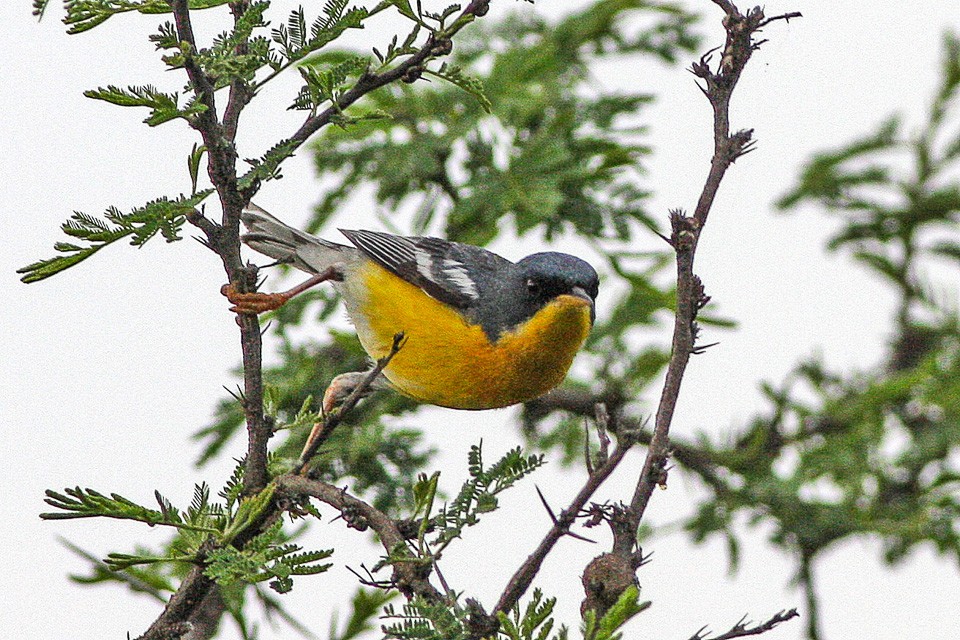Tropical Parula
A species of Setophaga Warblers Scientific name : Setophaga pitiayumi Genus : Setophaga Warblers
Tropical Parula, A species of Setophaga Warblers
Botanical name: Setophaga pitiayumi
Genus: Setophaga Warblers
Content
Description General Info
Description
It is 4.3 in (11 cm) long and has mainly blue-grey upperparts, with a greenish back patch and two white wingbars. The underparts are yellow, becoming orange on the breast. The male has a black patch from the bill to behind the eye. Females are slightly duller than the males and lacks black on the head. The immature tropical parula is dull-plumaged, lacks the wing bars, and has a grey band on the breast. The song is a high buzzy trill, and the call is a sharp tsit. The tropical parula has about 14 subspecies, with a wide range of plumage tones. S. p. graysoni, is endemic to Socorro in the Revillagigedo Islands. Some subspecies (especially insular ones) are occasionally considered separate species. Setophaga pitiayumi has occasionally been lumped with the closely related northern parula (S. americana) as a single species. Hybrids are routinely found in the Rio Grande Valley of southern Texas, though this may be a recent phenomenon. Most tropical parulas can be distinguished from the northern parula by their lack of white eye crescents, but this may be ambiguous in hybrids. One should also look for the distribution and extent of non-yellow coloration on the breast, and the extent of yellow below the cheek and on the belly. In addition, a partially leucistic tropical parula female was seen in 2005, at Reserva Buenaventura in El Oro Province, Ecuador. With several small white areas on the forehead and around the eyes, this bird appeared much like a hybrid, but such birds would only occur as far south as Panama (if they would migrate like the northern parula). 
Size
10-11 cm (4-4.5 in)
Nest Placement
Shrub
Feeding Habits
Tropical Parula primarily consumes insects, employing a foraging method of gleaning prey from foliage. Tropical Parula exhibits adaptability in feeding times and techniques, but does not have unique dietary adaptations.
Habitat
Oaks, riverside woods
Nest Behavior
Tropical Parula exhibits persistent territorial singing by males during spring. Nest building is primarily a female task, with timing possibly coinciding with spring return. The species may show year-round territorial pairing in the tropics, with less clarity on timing in other ranges.
Nest Characteristics
The nest of tropical Parula is located 8-40 feet above ground, often in hanging Spanish moss, orchids, or cactus. The nest may incorporate minimal materials when in Spanish moss, while in other locations, it resembles a cup made of moss, palmetto bark, grass, roots, and hair, with a lining of plant down and feathers.
Dite type
Insectivorous
General Info
Feeding Habits
Bird food type
Bird Feeder Type

Small Tube Feeder

Platform
Sounds
Call
Recording location: Costa Rica
Song
Recording location: Costa Rica
Species Status
Not globally threatened.
Scientific Classification
Phylum
Chordates Class
Birds Order
Perching birds Family
New world warblers Genus
Setophaga Warblers Species
Tropical Parula 